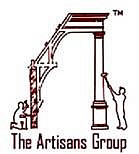1. INTRODUCTION
The "discrete damages/cost variance analysis method" for quantifying construction claim damages involves the specific distribution of all costs incurred on the project rather than quantifying only certain parts of the cost or damage analysis as may be used in the other methods. The credibility of this method is established by separating the cost growth that results from bid error, noncompensable, and compensable cost problems, as established by first using the modified total cost method, and then identifying individual compensable problems with specific costs tied to each problem. In addition, the cost growth for each claim problem is applied to each relevant cost account to demonstrate that the "sum of the parts" of each claim does not exceed the whole cost overrun for each cost account. The discrete damages/cost variance analysis method is illustrated by Figure 1.
The discrete damages/cost variance analysis method appropriates all costs taken from the claimant's cost records into cost variance analysis categories, which set forth the claimed costs separate from the other noncompensable causes of cost overruns. These cost variance analysis categories include the original bid, any bid errors, approved changes, pending changes, specific compensable problems (claims), and noncompensable (or nonrequested) costs. Because the claimant is in each case associating a particular item of damage for each compensable problem, the cause/effect relationship is established as the numbers are calculated. Accordingly, the claimed amount is both easy to verify and difficult to refute. Most contractors maintain cost records that have some degree of subdivided cost account detail. Therefore, it is more credible to demonstrate variances at the greatest level of detail possible using the available cost records.
However, this method may be difficult to apply in a case where there are several interrelated cause and- effect relationships, such as a project impacted by numerous change orders as well as contractor caused problems. Using this method, the damages that may be caused by the discrete damages category, cumulative impact of changes, would be calculated directly using industry studies, or the measured mile method, or indirectly by claiming some portion of the remaining cost overrun in each cost account. Depending on the method used for calculating productivity loss, the claim is often calculated on a cost account basis or based on all remaining labor overruns if those overruns can be tied to the impact of the issues being claimed.
The advantages of this discrete damages/cost variance analysis method are:
- Because all components of the cost records are evaluated and distributed into the claim matrix, the total value of the requested funds can be fully explained and justified.
- The link between entitlement and the amount of damages is developed at the lowest level of detail of the cost records, thus providing significant credibility to the burden of proof.
- Isolation of the damages of cost components and individual claim problems identifies the hard areas of claim while also identifying the soft spots to be negotiated, if necessary.
2. SEVEN STEP PROCESS
The discrete damages/cost variance analysis method involves seven steps. By analysis of the detailed cost records, each project work activity is first divided into the basic cost elements (cost accounts) of direct labor, labor burdens, construction equipment ownership and operating expense, rental equipment, subcontracts, permanent materials and equipment, consumable materials and supplies, field overhead, home office overhead, and profit. A typical cost account structure is shown by Figure 2. The bid cost (budget) and the actual cost for each cost element of each project activity are identified.
Secondly, the detailed project as-planned and as-built schedules are analyzed to identify the time frame of specific delays, disruptions, changes, labor strikes, suspensions, adverse weather conditions, deliveries of critical equipment and material, acceleration, etc. The time frame for each problem isolates when each problem and cost occurred, which can then be traced back to the contractor's job cost reports and other man-hour records.
The third step involves evaluation of the contractor's bid estimate to determine if it underestimated any cost elements of any activity. Knowledge of industry standards, efficient construction techniques, man-hour productivities, and cost estimating are essential to properly evaluate the contractor's bid. In addition to the evaluation of bid errors, all approved and pending changes to the contract price are applied to derive an adjusted bid value for each work activity.
As a fourth step, each activity and its cost elements are evaluated for noncompensable cost items. These may include costs incurred because of labor strikes, idle time due to bad weather, equipment down-time caused by the contractor's improper operation or maintenance, inefficient management of the contractor's labor or of subcontractors, or other cost items that are clearly not the owner's responsibility. The actual cost for each activity is reduced by such noncompensable costs to derive an adjusted value.
As a fifth step, each activity is assessed by time frame for the impact and cost overrun caused by each specific claim problem. Damages such as additional labor, equipment or material costs, premium time, second shift costs, reduced productivity, extended overhead, financing costs, and labor or material escalation are identified and assigned to the appropriate claim problem to complete the distribution of all project costs. Cost overruns outside the time frame in which the problem or its effect occurred are excluded from the compensable cost distribution and, therefore, are noncompensable.
In the sixth step of the analysis, the cost/damage analysis matrix of the damage analysis components, project work activities, and cost accounts are totaled to determine the specific dollar amount of each requested claim (compensable problem). The actual cost for each project work activity by row is first distributed into one or more of the appropriate cost accounts. The actual cost in each cost account of each activity is then distributed into the appropriate damage analysis component category. The cost/damage analysis matrix is illustrated in three dimensions by Figure 3.
As a final, seventh step, the claimant must clearly communicate the basis of the distribution of costs into the claim categories and support each element of the requested compensable damages with a cause-and-effect explanation to support the entitlement for cost recovery.
3. DEVELOPMENT OF COST ANALYSIS DATABASES
. . .Continue to read rest of article (PDF).











